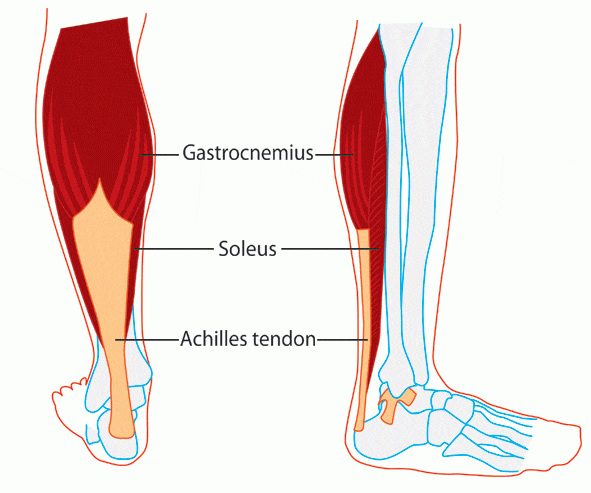Calf Muscle / Gastrocnemius
The Gastrocnemius muscle is the most superficial muscle on the back of lower leg, which we know as calf. The word gastrocnemius is a combination of two Greek words meaning “stomach of leg”, referring to its belly shaped appearance. This muscle along with the deeper laying soleus muscle forms the calf muscle. In fact, according to some anatomists both gastrocnemius and soleus are a single muscle named triceps surae.
This is a simple headline
Gastrocnemius muscle is located in the posterior compartment of the leg.
It starts a little above the knee joint, from lower end of femur (thighbone). At its upper end the muscle comprises of two prominent parts referred to as the medial head (part of the muscle on the inner side) and the lateral head (part of the muscle on the outer side of leg).
It crosses the knee joint at the back and runs down along the posterior aspect of lower leg. On its lower end, it converts into a thick fibrous tendon called Achilles tendon. Both the gastrocnemius and soleus muscles form this tendon, which is considered the thickest and strongest tendon in the whole body.
The Achilles tendon crosses at the back of the ankle and gets inserted into the backside of heel bone (calcaneus) of the foot.
Movements:
As this muscle crosses over two joints, it is responsible for movements at both these joints.
At the knee joint, gastrocnemius muscle contracts to bend (flex) the knee
At the ankle joint, the contraction of gastrocnemius pulls the heel upwards leading to downward bending (plantarflexion) of the foot.
Functions:
As gastrocnemius plantarflexes the ankle (pulls the heel upwards and bends the foot downwards) , and gives the necessary propulsion for running and jumping.
Nerve Supply:
Tibial nerve S1, S2
Blood Supply:
Sural artery a branch of Popliteal artery.
This muscle is very prone to injuries (tears) and spasms, which are involuntary contractions of the muscle and are quite painful. Its overuse may also lead to muscle inflammation.






